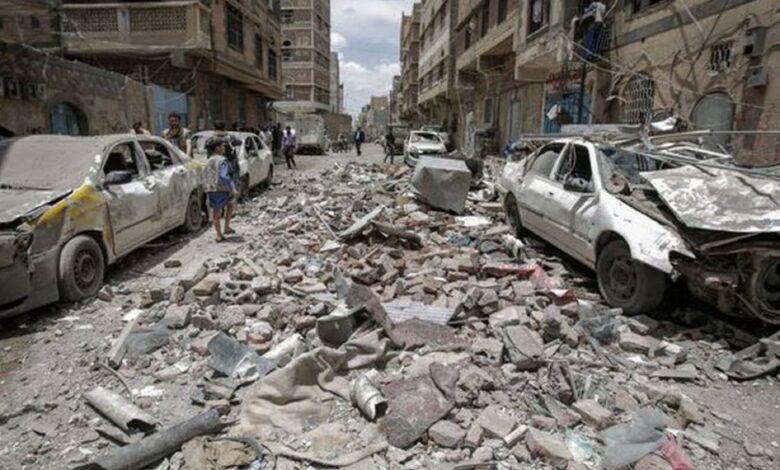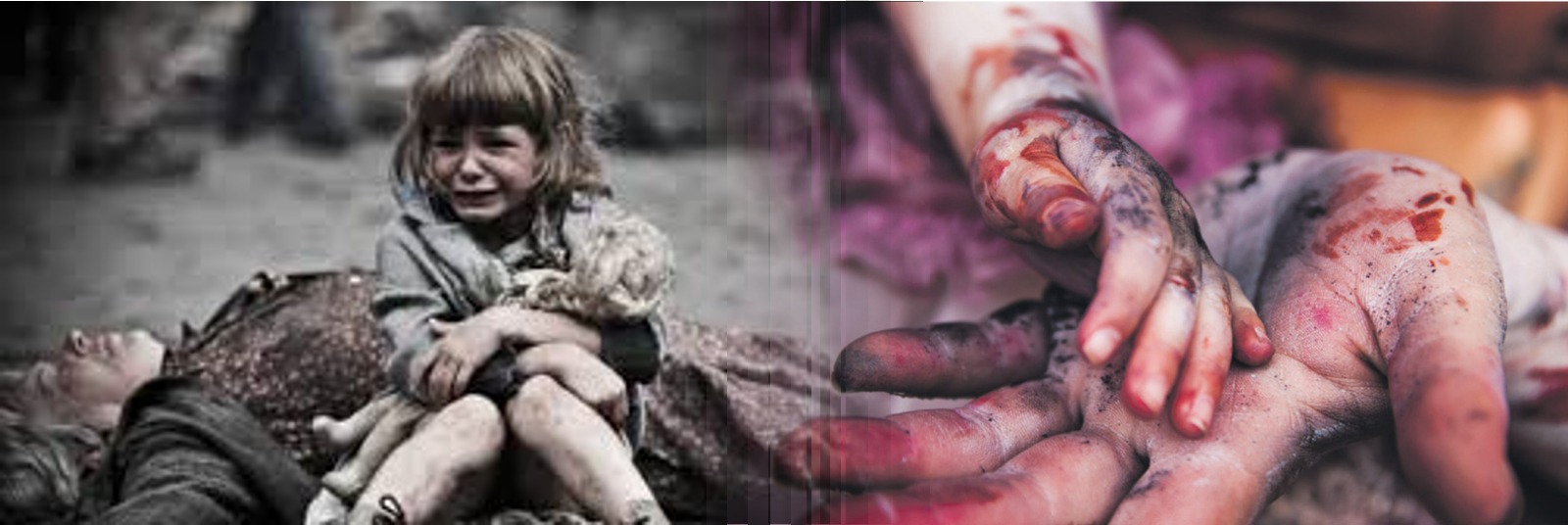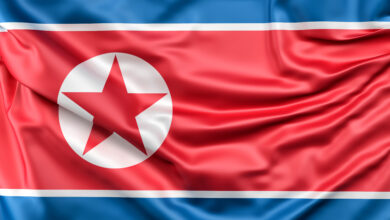Yemen: an international civil war.

More than six years after the outbreak of the civil war, Yemen still finds itself on the brink of collapse. Once a prosperous country, Yemen has become one of the poorest states of the Arab world and the ravaging war has lest millions without shelter, access to food and health services and caused a death toll of many thousand lives alongside a vast material catastrophe. Not only the national complexities but also the intense foreign interference have made things so complicated that the peace process is on a standstill, pushing the country into becoming a complete failed state with grave consequences for its citizens and the sensitive area of the Gulf.
What happened?
Even though Yemen’s history goes back centuries the modern state was formed only after the end of the Cold War in 1990, with the unification of the US- and Saudi- backed Yemen Arab Republic, that was founded in 1962 in the north, and the USSR-backed People’s Democratic Republic of Yemen, that was founded in 1967 in the south. The military officer Ali Abdullah Saleh, leader of north Yemen since 1978, assumed the presidency of the newly-formed state, of the approximately 25 million people and remained to its leader until 2011 (Laub, 2015). However, Saleh managed to stay in power by establishing a corrupted authoritarian regime that ruled through patronage and plying the various fractions off one another while never succeeding in securing absolute power in the whole territory (Laub, 2015, p.1). As Clausen (2018) notes: “The Yemeni state has never lived up to the Weberian ideal of being able to enforce rules or to hold the monopoly of legitimate violence based on rational-legal logics”. Therefore many Yemeni factions remained dissatisfied and marginalized during Saleh’s rule. The most prominent among them was the Houthis (took their name from their founder Hussein al Houthi) a religious and political movement, founded in 1980s, that took military characteristics after the new millennia and that represents the Zaydi Shia population of the country (35% of the population). The Houthis fought six times against Saleh from 2004 to 2010 (Laub, 2015).
Thus, Yemen could not escape the impacts of the Arab Spring that utterly changed the realities in the Middle East and North Africa. In 2011, under international and domestic pressure Saleh stepped down of power, after securing immunity for himself. His vice President Abed Rabbo Mansour al-Hadi was inaugurated as an interim president with the mandate to lead the country through its democratic transition. Backed by the US and the Gulf Cooperation Council (GCC), Hadi established the UN-sponsored National Dialogue Conference (NDC), whose 565 delegates were responsible of formulating a new constitution (Laub, 2015). The failure of the NDC to agree on a new constitution alongside with the decision of Hadi to lift fuel subsidies in July 2014, under the pressure of the International Monetary Fund, sparked protests by the Houthi and the anti-Houthi fractions that escalated to armed clashes. Houthis quickly took control of the North and quickly stormed the capital Sana’a in January 2015. Hadi escaped to Aden and then to Riyadh, remaining the UN recognized executive of the country and the Houthis issued their own constitutional declaration, established governing bodies and continued their advance southwards provoking international and internal backlash (Laub, 2015).
For this reason, Saudi Arabia and the UAE, with the logistical and intelligence support of the US, UK and France launched the operation Decisive Storm against the Houthis, focusing on air-bombings and a blockade of the Houthi-controlled ports, while assisting the al- Hadi forces in the port of Aden. The Ansar Allah, the other name of the Houthis, formed a coalition with the former president Saleh who died two years later and started attacking positions of the government in Aden and Saudi oil-fields in the borders. In this state of chaos that remains until today, the fraction of al-Qaeda in Yemen (AQAP), with links with the Islamic State, seized the opportunity to expand its influence in the east and to launch deadly attacks mainly in Aden (BBC, 2020).
The foreign intervention
Even though it seemed that foreign intervention could end the insurgency in a matter of months, it made things much more complicated on the ground. On the one hand, the coalition under the leadership of the Saudi Prince Mohammed bin Salman forecast that the operation would last only a few weeks (BBC, 2020). The ultimate goal was to crash the Houthi movement that was supposed to be an Iranian proxy and to reestablish the rule of Hadi. However the war is still ravaging the country and the Saudi performance has been criticized domestically and internationally (Feierstein, 2017). The air-campaign that cost the lives of many civilians has undermined Hadi’s internal legitimacy especially in Houthi-controlled areas (Clausen, 2018). In addition the actual cost of the campaign has been considerable, surpassing 5 billion US dollars for 2015 alone, sparking dissatisfaction to the Wahhabi Kingdom and obliging the UAE to withdraw their forces in July 2019 (Feierstein, 2017; BBC, 2020).
On the other hand, the Iranian support to the Houthi movement has been a crucial factor for its success. Even though there has been some debate as to what extend Iran is supporting the Houthis, it has been confirmed that Iran’s contribution to the war has been essential especially after the capture of the capital. Iran is not only smuggling weapons, in some instances highly sophisticated ones, but it has also send members of its Revolutionary Guard and Hezbollah to train the Houthi army. Iranian support comes at very little cost in contrast to the financial, human and reputational damage suffered by the coalition (Freierstein, 2017).
How to stop the catastrophe?
Yemen constitutes one of the worst humanitarian crises today. The conflict has cost the lives of more than a hundred thousand people and has left 4 million Yemenis displaced (Doucet, 2021; Al Jazeera, 2021). The country also suffers from an unprecedented cholera outbreak, widespread famine, as food prices have skyrocketed and there have also been reports about a Covid-19 outbreak, especially in the Houthi-controlled areas (Al Jazeera, 2020; BBC, 2020). Hence it is imperative to act unilaterally to end the tragedy.
Firstly it is of primordial importance to stop foreign intervention that prolongs the catastrophe. As Clausen (2018) notes: “the involvement of regional actors, most notably Saudi Arabia and the United Arab Emirates, but also Iran, has hardened conflict lines and reinforced cleavages that did not play a substantial role before the crisis, such as sectarianism. The insistence on understanding the conflict in terms of the Sunni/Shiite schism or the regional competition between Iran and Saudi Arabia has become a self-fulfilling prophecy that in turn has further complicated and exacerbated the conflict”. For this to be realized the US should promote dialogue between the two rivals. Biden has shown its commitment to end the war by ending the US support to the Saudis and temporarily halting arms exports (BBC, 2021). However Washington can also promote dialogue between Riyadh and Tehran by offering several “carrots” for the rapprochement such as easing sanctions to Iran and enhancing trade with Saudi Arabia, including arms sales.
On a second level, the US and the UN can also make a difference inside Yemen. The recent failed ceasefire and the negotiation of a peace deal has shown that Houthis are unwilling to negotiate in a time that they are winning battles on the ground, especially in the current siege of the strategic Marib city (Al Jazeera, 2021). Therefore the US could continue the “carrot and stick policy” to push the Houthi leadership into the negotiations table by assuring their access to power in a unified Yemen and showing that the US is willing to upscale its presence to end the 6 year long conflict.
These are some essential steps to end the conflict that has caused immense human suffering and material loss, while preventing Yemen from becoming a complete “failed state” that would threaten the fragile stability of the whole region.
References
Clausen, M. L. (2018). Competing for Control over the State: The Case of Yemen. Small Wars & Insurgencies, 29(3), 560–578.
Doucet, L. (2021 March 22). Yemen conflict: Saudi Arabia puts forward peace plan. BBC. Accessed in 2021 May 9 from https://www.bbc.com/news/world-middle-east-56491503
Dozens dead as Yemen rebels advance on Marib. (2021 April 25). Al Jazeera. Accessed in 2021 May 9 from https://www.aljazeera.com/news/2021/4/25/yemen-rebels-advance-on-marib-dozens-dead-military-sources
Feierstein, G. (2017). Is There a Path Out of the Yemen Conflict? Why it Matters. PRISM, 7(1), 16-31.
Houthis ‘passed up major opportunity’ by refusing UN meeting: US. (2021 May 7). Al Jazeera. Accessed in 2021 May 9 from https://www.aljazeera.com/news/2021/5/7/houthis-attacks-worsen-yemens-dire-conditions-us-says
Laub, Z. (2015). Yemen in Crisis. Council on Foreign Relations.
Yemen crisis: Why is there a war? (2020 June 19). BBC. Accessed in 2021 May 9 from https://www.bbc.com/news/world-middle-east-29319423
Yemen gov’t accuses Houthis of covering up coronavirus outbreak (2020 May 18). Al Jazeera. Accessed in 2021 May 9 from https://www.aljazeera.com/news/2020/5/18/yemen-govt-accuses-houthis-of-covering-up-coronavirus-outbreak






